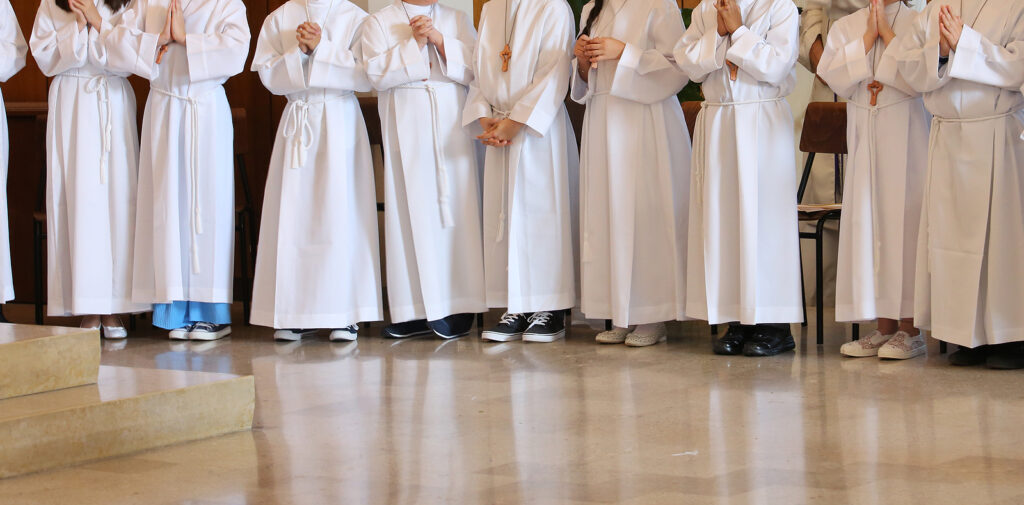Editor’s note: The following is an excerpt from Father Dave Dwyer’s new book, “Mass Class: Your Questions Answered.” The Catholic Mass is full of symbolism, ritual, and tradition, which means there’s a lot to understand! Have questions? You’re not alone! “Mass Class” is available now for purchase from Amazon and Paulist Press.
We’ve just moved to a new diocese and for the first time I’ve seen altar girls serving up there with the priest at Mass? To what degree is this allowed? — Daphne from Boiling Springs, Pennsylvania
 First of all, permit me to modify your terminology slightly. While we always used to just say “altar boys,” these days we tend to use the more inclusive “altar servers” since the people we’re talking about might be either male or female, and they could also be either young people between the ages of 8-14, or adults, even senior citizens, who have been trained to serve at the altar during Mass. But let’s rewind a bit.
First of all, permit me to modify your terminology slightly. While we always used to just say “altar boys,” these days we tend to use the more inclusive “altar servers” since the people we’re talking about might be either male or female, and they could also be either young people between the ages of 8-14, or adults, even senior citizens, who have been trained to serve at the altar during Mass. But let’s rewind a bit.
Prior to 50 years ago, the only people allowed to serve around the altar alongside priests and deacons were young men formally instituted as acolytes, who were often those preparing for, or at least potentially discerning, the priesthood. They were dressed kinda like priests, up there assisting the priests, and many of them eventually went on to become priests. A few things have happened over time that have led to you seeing a female altar server at your new parish—none of which are harbingers of women being admitted to the priesthood.
LISTEN: Is There a Maximum Number of Altar Servers Allowed at Mass?
In the early 1970s the position of acolyte was redefined so that it was no longer one of the “minor orders” on the way to priestly ordination, but rather a role that could be held by anyone trained to carry it out—yet one that was still limited to men. The 1983 revised version of the Code of Canon Law eliminated that male-only restriction by allowing anyone to serve in the capacity of acolyte without being officially “installed” as one, including women. Despite a fair amount of ambiguity, this paved the way for many individual American parishes to begin experimenting with what were first known as “altar girls.” A decade later, a Vatican proclamation approved by Pope Saint John Paul II formally allowed female altar servers throughout the world on a temporary or exceptional basis, leaving the final decision in any diocese up to the bishop. Most recently in 2021, Pope Francis called for a change in the wording of canon law to afford altar servers of either gender equal status in the eyes of the Church on a permanent basis (canon 230). The Holy Father declared at the time, “such lay ministries, being based on the sacrament of baptism, can be entrusted to all the faithful who are suitable, whether male or female.”
However, it is still up to a local bishop to decide who may perform the role of altar server in his diocese. The generally accepted practice in the United States and around the world, including at papal Masses since the time of Benedict XVI, is to allow women altar servers. Of the more than 200 dioceses in the United States and Canada, only one or two do not allow female altar servers. In Pope Francis’ view, having women serve at the altar has value far beyond the sanctuary of their home parish. He argued that doing so would “increase the recognition… of the precious contribution that many lay people make, including women, to the life and mission of the Church.”